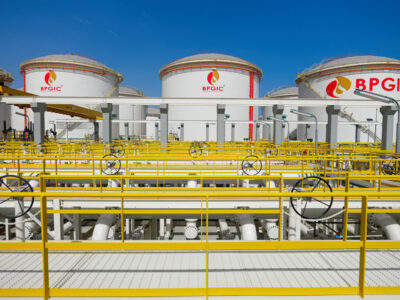The MENA region has quite a thirst but little to quench it. Geography dictates that water in the region is a scarce commodity; more so than in any other region of the world.
Given this fact, it is perhaps surprising that MENA plays host to a highly significant agriculture sector; one that employs an eye-opening 88 percent of the population.
The MENA agriculture sector consumes 85 percent of all its water resources; and in return it produces just 50 percent of the food it consumes, accounting for a meager 24 percent of GDP on average, at best.
With an abundance of profitable infrastructure projects in the works and per capita water availability projected to halve by 2050, the agricultural sector is facing a statistical ‘High Noon’.
To date, a number of governments have invested in water resource management schemes, without any great success, and in too many cases, water subsidies continue to mask the true cost of inefficient water allocations and the urgent need for reform.
1.6 billion people across the world live in areas of insufficient rainfall – a vast constituency the marketplace can no longer ignore. Added to this, research conclusions point to the impressive revenues can be realised with a greater focus on high value agricultural output and the deployment of new agri-technologies.
To survive and prosper, the MENA agriculture sector must take a long hard look at itself and devise realistic strategies to increase efficiency and yield significantly. In this respect money talks and the good news is, what MENA lacks in water it more than makes up for in liquidity and prowess.
Despite recent market fluctuations, GCC investors are forever on the look out for unique opportunities, and opportunities is one thing there are…
The focus should shift from the maximisation of yield per unit area to the achievement of efficient water productivity and the development of a new generation of crops that are able to prosper in dryland.
Yes, the green revolution has seen tremendous strides made in the improvement of crop yields in areas of ample irrigation, but little has been done to improve the lives of those who currently reside in countries affected by insufficient rainfall – until now that is.
Help is at hand in the form of an investment community waking up to the enormous potential of funding technological solutions to the inherent constraints in dryland farming.
If we persevere with unsustainable farming methods, damage will be done that can only compound the problems already faced in food supply.
Instead, we can choose to sponsor a revolution in agricultural technology and resource management, and the private sector can and should play a leading role in this endeavour.
We are already seeing new breeds of crop that grow faster, have increased levels of nutrition, and crucially, require considerably less water.
Prioritising the main staples in harsher climates including millet, lentils, chickpeas, barley and faba beans, plus research into genetic improvements are doing much to address regional food security.
New satellite remote sensing technologies are a critical resource offering planners extremely accurate data on the location and availability of water supplies, allowing them to make efficient decisions in relation to water allocation.
Advances in agricultural biotechnology already raise the possibility of producing new crop varieties that can resist drought, disease and pests that too often threaten harvests the world over.
In practice, there is far to travel before the MENA as a whole will effectively address the agricultural shortfalls and the scarcity in water resources – but we’ve seen it can be done.
Until now, the public sector has carried much of the burden and progress has been modest. However, progress begets progress and in an age of huge technological strides, the emergence of new industries offer ever more intriguing private sector investment opportunities.
Essentially, private finance completes a wider team of stakeholders including national governments, NGO’s, the technology industry and, of course, the agricultural community at large.
All have meaty roles to play and the positive interplay between these bodies, each listening to and understanding the needs of the other could and should deliver stunning results.
Will the MENA region really become the cradle for a new generation of agricultural technology? Can the solutions to century old problems associated with dryland farming really emanate from counties like Jordan, Algeria, Kuwait or Saudi Arabia?
Well, time will tell and as the saying goes, Rome wasn’t built in day, but arousing the genuine interest of private finance alongside the current market performance is to many observers the final piece in the puzzle.
With the financial resources now available to put well researched and highly accredited theory into practice, I for one wouldn’t bet against it.
Mehran Jamsheer is the Deputy CEO of Gulf Finance House.




